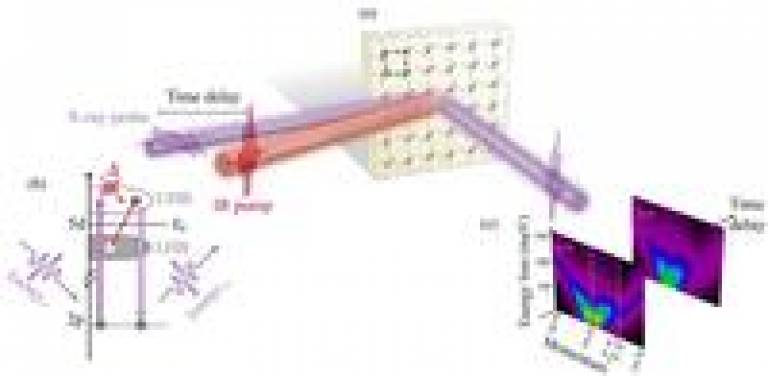[Research] Ultrafast control and detection of magnetic correlations in a 5d transition metal oxide
9 October 2016
Understanding how the electronic and magnetic properties of materials are modified by the injection of charge carriers is of central importance across a range of fundamental and applied research.
 For
example, the selective doping of impurity atoms into semiconductors such
as silicon provides electrons or holes thus allowing the
For
example, the selective doping of impurity atoms into semiconductors such
as silicon provides electrons or holes thus allowing the
carrier concentration to be modified. With careful engineering, nanoscale transistors can be constructed which are at the core of smartphones, computers, and almost every electronic appliance we use today. However, charge injection through chemical doping has a number of limitations, including difficulties associated with integration of the dopant atom in the host lattice, and control of the precise number and distribution of dopant atoms. Furthermore, once the device has been fabricated, that's it: there is no possibility of varying the doping level, and hence the electrical properties remain fixed.
By contrast, doping by exciting electrons into the conduction band with light - photo doping - provides a way of controlling and varying the number of charge carriers at will. The use of pulsed lasers to achieve photo doping opens up the possibility of investigating the dynamics of charge carrier creation and recombination, as well as the opportunity to study the creation of exotic, non-equilibrium electronic and magnetic states.
An international collaboration of scientists from the LCN, United States, Japan, Germany, Switzerland, Spain and the Netherlands have recently reported in Nature Materials the development of novel X-ray scattering techniques for studying the electronic and magnetic correlations of photo induced transient states. The lifetime of such transient states is typically very short - on the order of 10-12 seconds - so the experimenters used state of the art X-ray free-electron laser (XFEL) facilities in California and Japan to generate intense, very short X-ray pulses in order to probe the dynamics of the excited state in a Sr2IrO4 thin film. This included the first ever time-resolved resonant inelastic X-ray scattering (t-RIXS) measurements performed at a XFEL in the hard X-ray regime. With careful selection of the infra-red laser pump energy, electrons are excited across the optical gap in Sr2IrO4, transforming it from an insulator to a metal.
Link to Journal: Ultrafast energy- and momentum-resolved dynamics of magnetic correlations in the photo-doped Mott insulator Sr2IrO4, Nature Materials (2016)
 Close
Close

